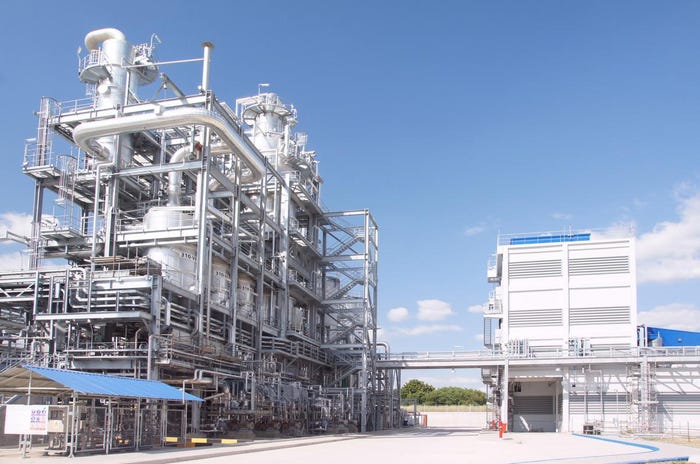Purac has successfully started up its new 75,000 tonnes/yr lactide plant in Thailand. Construction of the EUR 45 million state-of-the-art plant, located at the existing Purac site in Thailand, was recently completed, and the new plant is currently undergoing commissioning. Already, several batches of high quality PURALACT lactides have been produced and shipping to customers is scheduled to start in the very near future.
February 22, 2012
Purac has successfully started up its new 75,000 tonnes/yr lactide plant in Thailand. Construction of the EUR 45 million state-of-the-art plant, located at the existing Purac site in Thailand, was recently completed, and the new plant is currently undergoing commissioning. Already, several batches of high quality PURALACT lactides have been produced and shipping to customers is scheduled to start in the very near future.

Purac Thailand PLA plant
This investment is driven by the commitment of Purac and its parent company CSM to play a leading role in the development of the market for lactic acid based bioplastics (Poly Lactic Acid or PLA). PLA contributes, with commercially viable and readily available products, to a significantly lower carbon footprint compared to traditional fossil-based plastics. The technology behind the PLA polymers made from the PURALACT L and PURALACT D monomers allows Purac’s partners to produce PLA with application temperatures up to 180°C (266 °F).François de Bie, Marketing Director Bioplastics comments: “Based on our proprietary technology we have demonstrated the benefits of Purac’s PLA building blocks in demanding applications in the packaging, foam, fiber and consumer products industries.”
PLA homopolymer resin produced from Purac’s stereo chemically pure L-Lactide has recently been tested and validated in a range of high-end applications, including fiber spinning. In a technical performance comparison between a regular commercial PLA fiber grade and a comparable PURALACT L-based PLLA homo-polymer, the PLLA homo-polymer yielded fully-drawn yarn with excellent mechanical and thermal properties, due to the significantly higher melting point of PLLA homo-polymer. The fast crystallization and high levels of crystallinity of the PLLA provide important benefits to physical properties of fibers and fabrics.
PURALACT-based PLA resins have also been demonstrated to meet the high-heat requirements of various packaging applications. A product formulation developed on the basis of blends of PLA homo-polymer resins - PURALACT- based PLLA and PDLA - was extruded into a sheet material and subsequently thermoformed on an industrial production line for applications such as hot food trays.
“The successful start up of our 75,000 tonnes/yr lactide plant marks another milestone in Purac’s commitment to the development of the PLA market” says Jeroen Jonker, Vice President Bioplastics at Purac. “We are now able to supply monomers that can be transformed into high-performance PLA, whilst providing the scale and security of supply as required by the end use markets. I am particularly excited that we are increasingly able to attract customers in the high end markets, a clear confirmation of our high performance PLA strategy.”
About the Author(s)
You May Also Like


